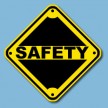Table Saw Litigation and Contact Detection Technology
Man cuts Own Fingers On Ryobi Table Saw – Sues Manufacturer
The man’s lawyers accused One World Technologies Inc., maker of Ryobi saws, of negligence for failing to include a flesh detection technology that would prevent most serious injuries. One World Technologies Inc. was found 65% liable in a table-saw accident, hinged on the fact that SawStop’s skin-sensing technology was available at the time, but not used on the Ryobi saw. The jury awarded Osorio $1.5 million in damages even though he was only seeking $250,000. The verdict form indicated that the jury felt the table saw was “defectively designed” and the defects were a cause of Osorio’s accident.
Table Saw Litigation and Contact Detection Technology
Several things immediately come to mind when I read this;
- Barring the blade flying off this tool and through the air or some other clearly defective situation it is the table saw operators responsibility to exercise extreme caution when operating the saw.
- I wonder if this man bought / owned his saw before this technology was even available to consumers?
- I’d bet dollars to donuts that this man would never had spent the money for a table saw with flesh detection technology.
- The additional cost to manufacturers to implement this technology is estimated to be between $150-$200 per product, an amount that will be passed on to us the consumer. That means a $400 job site table saw would potentially rise in cost to around $625.
- False positives” or “nuisance trips” produce downtime and expenses. False positives can trip on common materials such as moist wood (think freshly delivered pressure treated lumber).
A false trip mandates replacement of the brake mechanism which is an expensive piece. Anytime that saw brake trips also mandates the saw owner to replace the saw blade, and brake mechanism.









